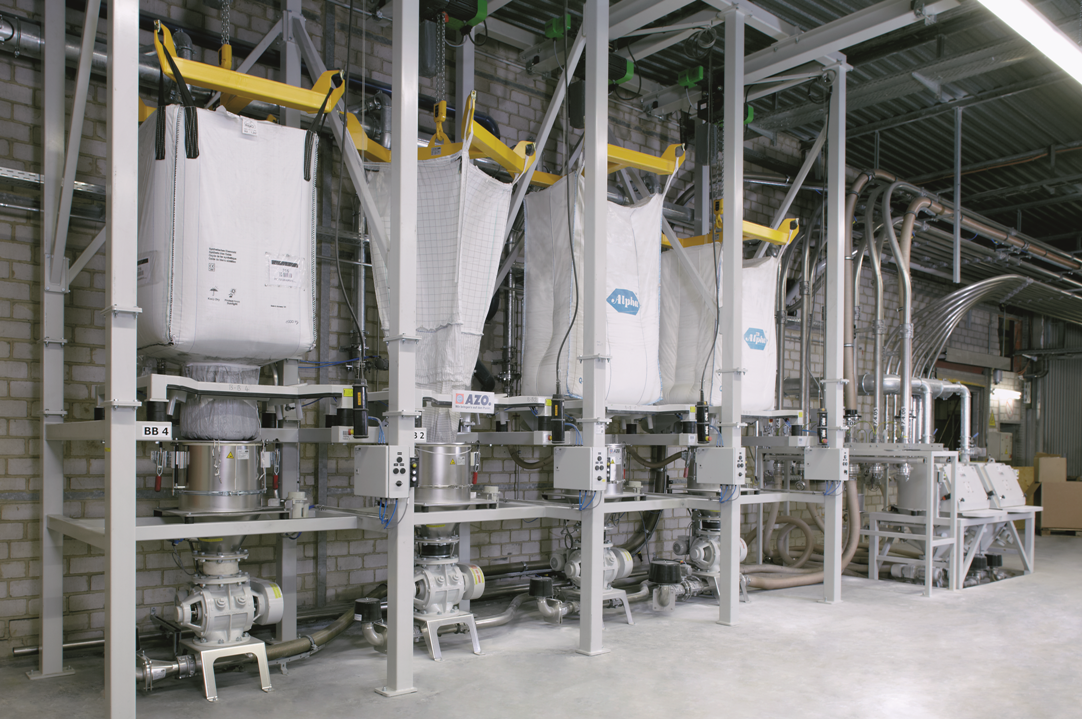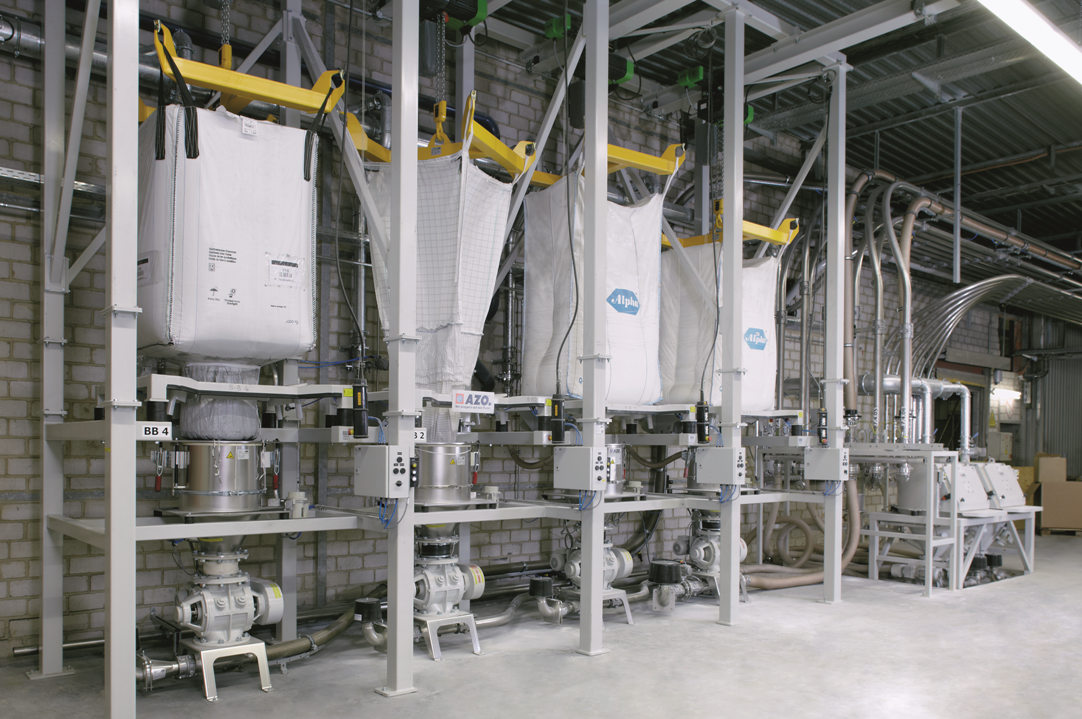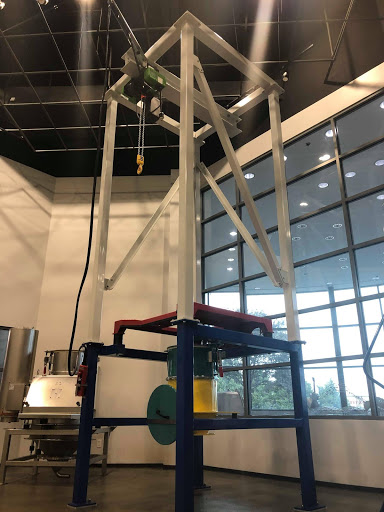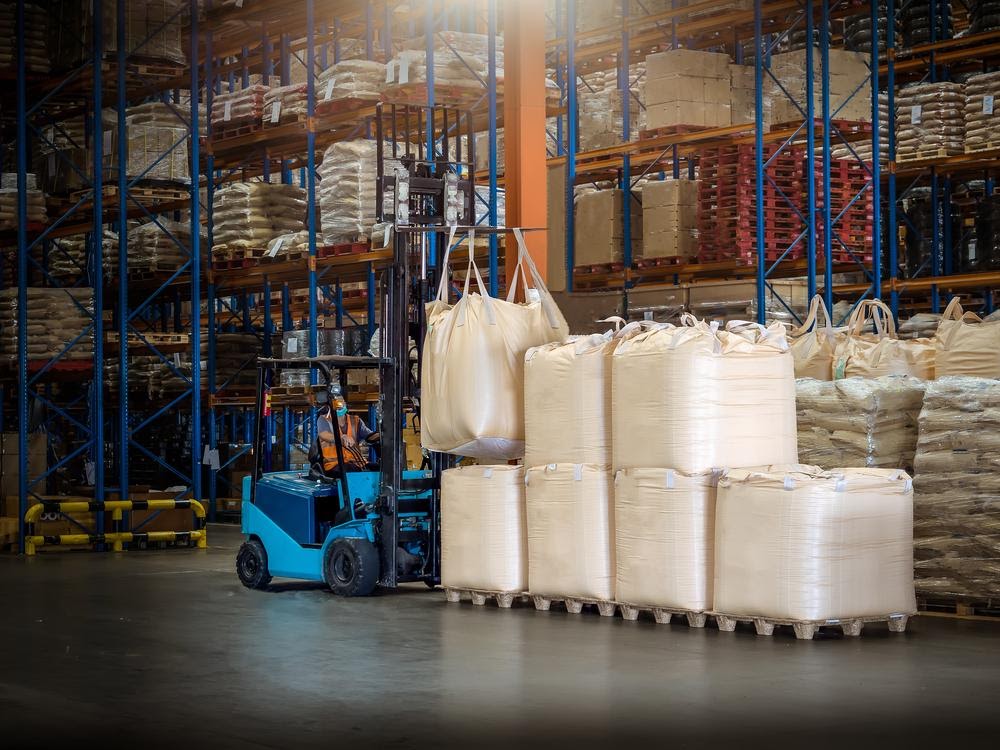
Electrically operated chain hoists lift bulk bags effortlessly and quickly. Sure, some manufacturers would rather not opt for new equipment if they already have a forklift that (theoretically) can accomplish the same function.
In terms of increasing efficiency and reaping the benefits that are inherent with upgrades to bulk material handling, however, an electric chain hoist represents an easy and effective addition to any bulk bag unloader. Colton Radford, who writes for U.S. Cargo Control’s blog, eloquently describes how any kind of chain hoist can assist operators in the cargo industry:
“By leveraging small force over a long distance and transforming it to large force over a short distance, chain hoists are able to accomplish heavy lifts and pulls that would otherwise be impossible for a person to accomplish alone.”
Chain hoists are uniquely qualified to perform the arduous task of lifting what people cannot. In turn, there are many benefits to incorporating an electric chain hoist with your very own bulk bag unloader (instead of using a fork truck) in the material handling world.

In the past, we’ve taken a look at the safety and efficiency-boosting benefits a chain hoist offers over that of a fork truck, but there are still some other points related to these benefits that are worth expanding on. Before we share even more reasons to incorporate an electric chain hoist into your bulk bag unloading system, remember that either method requires proper attention to safety.
Safety first: Use precaution whether using a fork truck or chain hoist
Compared to using a forklift to accomplish bag lifting, a chain hoist is generally a safer way to operate a system. This is especially true if an HMI (that is located away from the bag) or a wireless push-button pendant (that is not tied directly to the bulk bag unloader) is incorporated.
Still, in either scenario, it is absolutely critical to put proper safety rules or mechanisms in place. Some companies choose to implement fences or light curtains with their super sack unloaders. Some facilities simply stick to authorizing one individual in charge of safety to instruct those who happen to be around an unloader when lifting is commencing. Whether a forklift or chain hoist in being utilized, appropriate safety rules or mechanisms are essential.
Using forklifts increases the amount of time between the lifting and unloading stage
When utilizing a forklift, any bag must first be lifted and set up on “forks.” Then, the operator is tasked with lifting the bag (from the forklift) high enough to set it on or connect it to steelwork. When implementing a chain hoist, operators simply have to hook bags onto the hoist one time and lift it (often by using a remote pendant).
Setting up such a bag and connecting it to the steelwork before lifting it with a forklift represents an extra obstacle. Essentially, it means there will be more time between the lifting and unloading stages. Think about it: more functions in the facility can be accomplished with this extra time, essentially ensuring that your operations are more efficient in more than one way.

A modular bulk bag unloader in the AZO Inc. showroom (chain hoist attached)
Chain hoists can work in spaces that forklifts are unable to reach
Ergonomically speaking, a chain hoist lifts a bag in a less complicated way than a forklift. We’ve mentioned that it is difficult having one operator drive a forklift (hoisting the bag) and another (who has climbed up on the unloader) secure the bag to the suspension frame. You aren’t lifting a bag in the safest way possible with a forklift if you aren’t using two operators at a time.
Due to the size and placement of a chain hoist, one operator can have more visibility than two when using a forklift. With a chain hoist, one operator can gauge (from a distance) where the bag needs to be placed instead of looking around or communicating to another operator (on the other side of the forklift). Overall, chain hoists are safer because they offer this freedom of visibility.
Chain hoists are often cleaner than fork trucks
From an environmental health and safety standpoint, electrically operated chain hoists tend to be better options for bulk bag lifting than fork trucks as well. Let’s say an operator is working in a food and beverage plant where it is of critical importance to prevent contamination. Material that doesn’t belong in or near a product in this environment absolutely must be eliminated at all opportunities to do so, right?
If hydraulic fluid, oil or grease from a fork truck were to come into contact with the product zone, there would be some major sanitation concerns. This specific event might not occur too frequently, but it does make sense to keep certain equipment away from product or materials as much as possible. For some manufacturing environments, a fork truck may work just fine. For many food and pharma plants, a chain hoist represents a cleaner and much more hygienic solution.
Chain hoists typically cost less than new fork trucks
When bulk material handling can include various costs (including ever-increasing food ingredient prices and high transportation costs), procurement departments are often tasked with identifying opportunities for savings wherever possible. Simultaneously, these departments must be careful to ensure that product savings don't jeopardize quality and performance.
On average, chain hoists tend to be less expensive than entire fork trucks. If your operation is limited from a cost-efficiency perspective, this is a critical consideration. If a forklift is already present in your operation and investing in new equipment like an electronically operated chain hoist still seems prohibitively exorbitant, there’s still another major consideration that might turn the tide for you as far as increasing efficiency is concerned.

Fork trucks can be utilized elsewhere while a chain hoist is in use
This is a major benefit of implementing a chain hoist instead of a forklift to transport your big bags. Chain hoists clear areas up in the sense that operators aren’t “tying up” a forklift the whole time it is being used to lift bulk bags in place.
As we’ve established, electronic chain hoists are uniquely qualified to lift and transport bulk bags. With a hoist in place, there are more tasks that a separate forklift can accomplish during the time that bags are being lifted on an unloader. This also represents less energy used by operators to plan and communicate what equipment is free at what specific time in a plant.
To learn more about robust bulk bag unloaders designed and manufactured AZO, download our bulk bag unloading buying guide. In this free guide, you’ll find plenty of useful tips for putting together a bulk handling system that works for you, and you’ll discover how to add bulk material handling upgrades to an existing bulk bag unloader. For any further inquiries regarding material handling, you can also contact a dedicated sales representative or browse through more topics on our blog.


